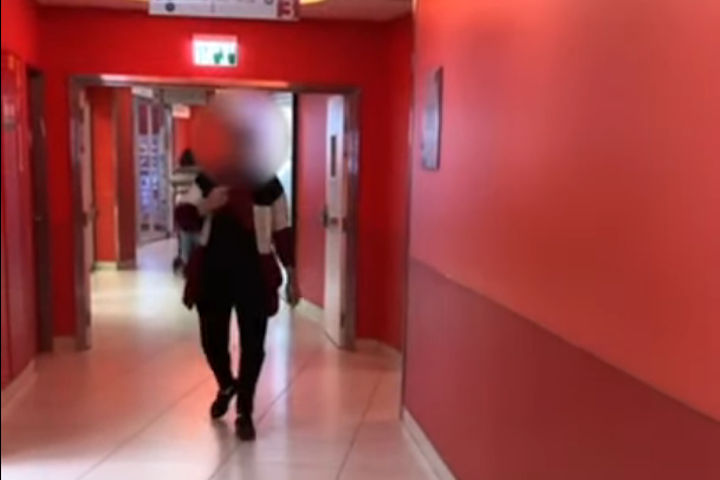Performing a complex, potentially dangerous medical procedure, it is possible to save legs with necrosis due to trauma. Rambam doctors are choosing this challenging option.
 “A”, during a follow-up visit to Ruth Rappaport Children's Hospital. Photography: Spokesperon's Office, RHCC.
“A”, during a follow-up visit to Ruth Rappaport Children's Hospital. Photography: Spokesperon's Office, RHCC.
When “A”, 27, from Jenin, walks around the corridors of Rambam Health Care Campus’s Ruth Rappaport Children's Hospital, it is difficult to imagine the drama that accompanied her life just a few years ago. A simple fracture she suffered as a teenager turned into a medical problem that threatened her leg with amputation. In a complex operation that very few surgeons in Israel know how to perform, surgeons at Rambam managed to save her leg – which, now functions normally. "The knowledge and experience we have gained by using this technique is great, and helps us to save children's limbs," explains Professor Mark Eidelman, Director of Pediatric Orthopedics at Ruth Rappaport Children’s Hospital.
Chronic osteomyelitis is an infection that develops as a result of a poorly treated bone fracture and deteriorates into a state of muscle necrosis. “A” developed this problem at the age of 14 due to poor medical treatment and sought further treatment at an Israeli hospital, but this time, the necrosis that spread to her leg muscles. Treating the necrosis involved the excision of large parts of the infected muscle in order to try to stop the disease. At this point, “A” came to Rambam to try to treat the leg deformity and make the diseased leg functional again. The alternative, in many cases, is complete amputation of the limb and prosthetic leg use. In the environment in which “A” lives, the implications of such a such result would affect many aspects of her life.
After undergoing five surgeries over time, “A” now lives with a fully functioning limb and no signs of the dreadful pain that previously accompanied the use of the her foot. "We now have five patients with this problem, and in all of them it developed as a result of some type of trauma," says Professor Eidelman. "Everyone has been treated successfully and their legs, which were supposed to undergo amputation, are functioning. The difficulty in these operations lies primarily in the fact that it is impossible to feel a pulse in the patient’s leg, and we are essentially operating blind, relying on our existing experience and the support of medical technology. Most of these patients will not enter the operating room because this difficulty causes many surgeons to refuse such a dangerous procedure. We are here to provide an alternative to removing a child's leg, and are delighted whenever we see our patients standing on two legs."
Watch “A”’s recent visit to the Rambam Clinic below.

